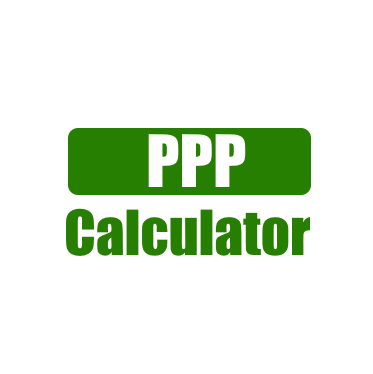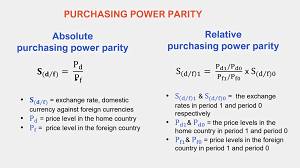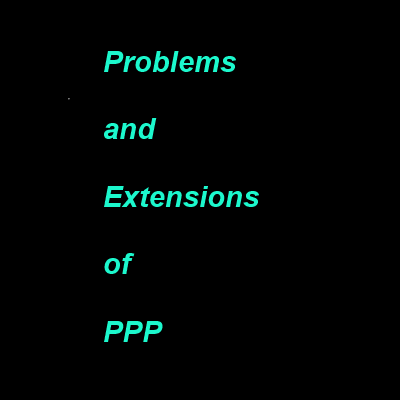
Exploring methods to improve Purchasing Power Parity
Exploring methods to improve Purchasing Power Parity
Background
PPPs measure the aggregate sum of labor and products. That a solitary unit of a country’s money purchase in another country. PPP-based transformations of consumptions wipe out the impact of cost level contrasts among nations. It reflect just contrasts in the volume of uses. The other option – market swapping scale based transformations – reflect both cost and volume contrasts. In consumptions and are in this manner improper for volume correlations. For instance, think about the PPP computation between the US and South Africa. Suppose a particular container of labor. Its products costs 100 US dollars (USD) in the US. Utilizing a market conversion scale of around 14 rand to the dollar. An individual heading out to South Africa could trade 100 USD for 1400 rand. Anyway lower cost levels in South Africa imply. That a similar bushel costs only 640 rand. To look at the volume of consumptions made in every nation just outlined. In this model as the quantity of bins bought to communicate. These uses in a typical money we should utilize the PPP swapping scale of 640 rand/100 USD = 6.4. Exploring methods to improve Purchasing Power Parity
Gross domestic product in Exploring methods to improve Purchasing Power Parity
PPPs utilized to make crosscountry correlations of Gross domestic product, utilization. The speculation and distributed for all nations partaking in the Worldwide Examination Program at the degree of Gross domestic product. Its for 44 use levels beneath Gross domestic product. PPPs communicated involving the US dollar as the base cash and are uninhibitedly open through the World Bank’s Databank.ICP information envelop PPPs and cost level records (the proportion of a country’s PPP to its market swapping scale). As well as PPP-changed uses in both total and per capita structure. Clients of ICP information, and the crosscountry examinations. They empower, incorporate arrangement creators, multilateral organizations. The scholarly community, the media, and the confidential area. The broadness and profundity of the ICP dataset make it an important contribution to many subjects. As under the financial, natural and social improvement umbrellas.
PPPs are used to make crosscountry connections of GDP
PPPs are used to make crosscountry connections of GDP, use hypothesis. They are conveyed for all countries participating in the Overall Assessment Program. The level of GDP, and for 44 use levels underneath GDP. PPPs are imparted including the US dollar. As the base money and are uninhibitedly open through the World Bank’s Databank.ICP data wrap PPPs and cost level records (the extent of a country’s PPP to its market trading scale). As well as PPP-changed involves in both aggregate and per capita structure. Clients of ICP data. The crosscountry assessments that they enable, consolidate course of action makers, multilateral associations. The academic local area, the media, and the secret region.
The broadness and significance of the ICP dataset make it a significant commitment to many subjects under the monetary, normal, and social improvement umbrellas. PPPs are used to spread out the overall poverty line and extents of overall desperation and pay uniqueness, which accordingly used by Practical Improvement Targets (SDGs) 1 and 10 to screen progress. Other SDGs focusing in on cultivation, prosperity, preparing, work, and energy and surges moreover draw in on PPPs to follow progress. ICP data furthermore used in the UN’s Human Improvement Record and the World Monetary Conversation’s Overall Earnestness Document. Examinations of money related improvement, proficiency, trade, government use, adventure, prosperity costs, development, waste, government help, costs, and the impact of violence various models. Exploring methods to improve Purchasing Power Parity
Overview for Exploring methods to improve Purchasing Power Parity
The Cal Poly Computerized Change Center (DxHub), controlled by Amazon Web Administrations (AWS), worked together with Cal Poly understudies and World Bank staff by means of the DxHub Challenge. Which is coordinated by the World Bank Information Lab’s Improvement Information Colleagues Program. The work zeroed in on architecting and exhibiting a proficient strategy to assemble and match normal buyer items to appraise Buying Power Equalities (PPPs). As a worldwide public great, ICP information utilized for examination and investigation, marker gathering, strategy making, and regulatory purposes at the public, two-sided, territorial, and worldwide levels. Exploring methods to improve Purchasing Power Parity
Problem and Opportunity
In numerous nations, cost information assortment for PPP-assessment is predominantly done physically by government-employed assessors on the ground in every country. This cycle calls for a lot of investment and assets; consequently
- The cost assortment practice is finished rarely – simply every three-to-four years, and
- The complete number and kinds of labor and products remembered for the bin restricted.
Besides, gathering on the web item and value information to make a casual PPP gauge expects scientists to gather physically, store, and contrast ‘like-and like’ items, or things, for the most part utilizing bookkeeping sheets. Expanding and to some extent mechanizing this manual way to deal with utilizing information from online sources can give ICP groups a financially savvy approach to creating close continuous PPP gauges. Likewise, having such a casual gauge will empower the groups to distinguish cost and item drifts while spanning the delay between manual assessments. Exploring methods to improve Purchasing Power ParityWhenever information have been gathered.
An ICP examiner
An ICP examiner should guarantee that two independently gathered items are equivalent before the costs can measure up. Take hamburger, for instance. A PPP gauge expects to look at the cost of meat items that practically identical to one another, yet obtained in two distinct areas (e.g., US versus South Africa) – giving a spatial cost correlation. Meat can sold with various qualities, for example, ‘grade’ (prime, decision), ‘cut’ (ribeye, throw dish, ground), and amount (two 10oz steaks are not equivalent to one 20oz), to give some examples. Every item recorded in a web-based source regularly has comparable information credits that as it may, these may not similar properties for a comparable item recorded in an alternate country from an alternate web-based source. Precisely looking at these items at the scale important to make PPP gauges rapidly turns out excessively work concentrated and cost-restrictive plausible.

Innovation in Action
To mimic information assortment at scale, understudies gathered item data including all credits and costs from online sources utilizing a python calculation that put away examples of item information utilizing AWS DynamoDB. When the information were put away the following period of the arrangement. It was to extricate significant pieces of the example information valuable for item coordinating. Item depictions, for example, “All Natural* 73% Lean/27% Fat Lean Ground Meat”. It is not tracked down under similar headings in information starting with one retailer then onto the next.
The group utilized normal language handling (NLP). Through profound learning and the Spacy.io Python library to address this. Given a couple of equivalent words for an item trait. The Spacy calculation separated the significant qualities regardless of whether keys. They were named completely not the same as information to information source. For instance. It perceived the item portrayal, e.g. Fat Lean Ground Meat was under. The ‘title’ key from one web-based information source. Conversely, from another source. It perceived the task title from the ‘name’ key.
Coordinating
Coordinating items with shifting depictions is a troublesome undertaking to robotize. In this way, the group originally endeavored to sort items into more modest subcategories and started utilizing NLP to foresee classifications from depictions. For instance, the model accurately distinguished that “all natural* 96% lean/4% fat additional lean ground meat”. A depiction for ground hamburger.The group enhanced the NLP capacity with a ‘pack of-words’ way to deal with classification.
‘Pack of words’ is a typical normal language handling system that concentrates esteem from bits of text by counting how frequently each word shows up in a specific depiction. Well known words should be significant. Information from online sources frequently gathered result. In this way, the group guessed that knowledge into individual classes could gathered from word groupings. This was a valuable technique in verifying that a rundown of numerous portrayals, all of which connected with an overall class, filled in as a compelling enormous grain channel to sort items with. While the capacity coordinate ‘like-with-like’ items not handily achieved.The group keeps on chasing after construing extra credits coordinate. In order to additionally further develop the item correlation.
Classifying items
In spite of precisely classifying items. It became obvious that coordinating items with high accuracy was too troublesome. An undertaking to robotize without a bigger dataset to prepare on completely. This issue settled a solitary retailer with admittance to a huge number of items. So the World Bank and DxHub groups consented to turn to a crossover arrangement. Rather than completely computerizing the matching system. They consented to join the progress of ordering. It also removing information to expand. A human’s capacity to effectively match items in comparative classes.
The group fostered a web application utilizing Respond, AWS Programming interface Passage, and AWS Lambda that offers items from various classifications. The calculation accepts are comparative. The scientist affirms or revises. The item matching idea bringing about a running PPP gauge for that item. It imagined that internet based retailers gives secret. It secures mass information access of online item information through APIs (application programming point of interaction). This application to empower close to ongoing PPP gauges. Exploring methods to improve Purchasing Power Parity
Conclusion
With this new turn of events, the ICP group intends to keep on fostering this model to gauge PPP. Further developing PPP computations can enormously decrease how much time and assets required. Similarly as critically, unveil this great all the more rapidly accessible to illuminate time-delicate choices. In the space of examination and examination, marker arrangement, strategy making. An authoritative purposes at the public, reciprocal, provincial, and worldwide levels. Understudy groups have given extra experiences to the improvement of this test. Ttheir connected coursework is accessible in the connections beneath.



